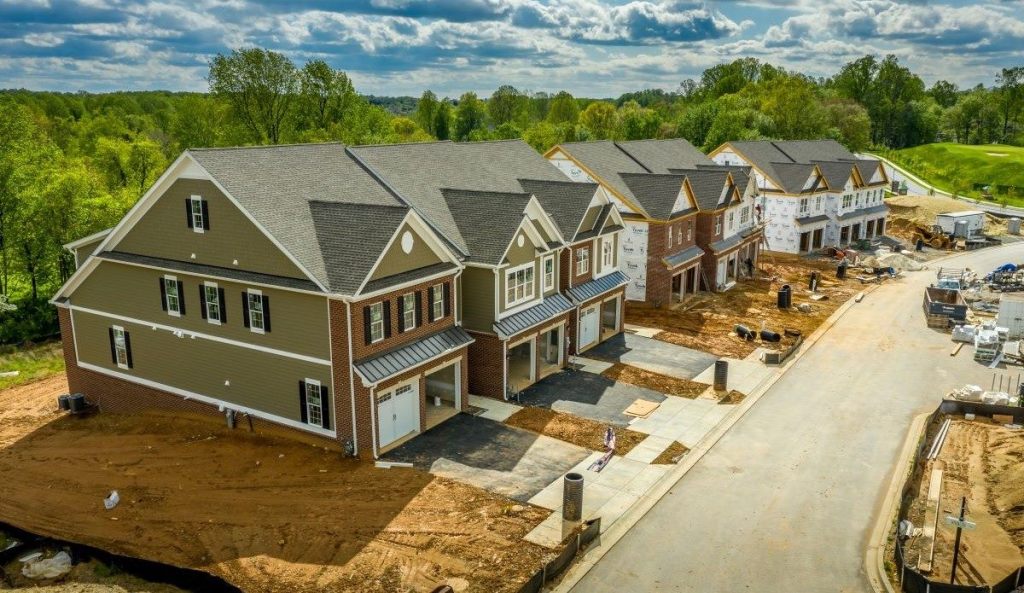After falling in July, housing starts were back up again in August, according to data released Wednesday by the U.S. Census Bureau and the U.S. Department of Housing and Urban Development (HUD).
In August, housing starts rose to a seasonally adjusted annual rate of 1.356 million, up 2.9% month over month and up 3.9% compared to a year ago. The single-family sector was the sole source of thus increase, as multifamily starts were down 6.7% monthly and 6.2% annually to a rate of 333,000 starts. In contract, single-family housing starts were up 15.8% month over month and 5.2% annually in August to a rate of 992,000 starts.
“Slowdowns in new single-family construction over the summer reflected sagging builder confidence, but homebuilders appear to be more confident as mortgage rates have fallen over the past few weeks and as the Federal Reserve gets set to cut interest rates. Therefore, it is likely that we will see an uptick in new housing starts over the coming months,” Lisa Sturtevant, the chief economist at Bright MLS, said in a statement.
Like starts, the number of permits issued also rose on a monthly basis in August, jumping 4.9% to 1.475 million. However, on a yearly basis, the pace at which permits were issued was down 6.5%. This trend was consistent across both the multifamily (451,000 permits) and single-family (967,000 permits) sectors, which posted 8.4% and 2.8% monthly increases and 16.8% and 0.5% yearly decreases, respectively.
“Despite the uptick in new housing starts last month, data on housing permits—which provide a leading indicator of future housing starts—were down compared to a year ago, suggesting that the delivery of new homes in 2025 could be lower than it was in either 2023 or 2024 when new housing construction, particularly apartment construction, was strong,” Sturtevant said. “The pace of apartment construction has slowed as record numbers of units have been delivered over the past 12 months and rent growth has slowed.”
While the pace of apartment construction may be cooling, the multifamily sector was the primary driver behind the 9.2% monthly increase and 30.2% annual increase in housing completions, which were at a pace of 1.788 million in August. The multifamily sector (740,000 completions) posted a 36.5% month-over-month gain and a 79.2% year-over-year increase in August, while the single-family sector (1.029 million completions) fell 5.6% month over month, but rose 8.4% annually.
Despite the mixed results, some economists are optimistic about the future of the new construction market.
“Starts and permits are still lower than levels from earlier this year, but combined with lower mortgage rates and pending Fed rate cuts, today’s data could be the start of a home-building revival,” Robert Frick, a corporate economist at Navy Federal Credit Union, said in a statement. “Builders not only will enjoy higher demand for homes as lower mortgage rates make them more affordable, their cost of building will drop and that will expand their margins and encourage more building.”
On a regional level, the Northeast (117,000 starts) posted the sole monthly and year declines, dropping 27.3% from a month ago and 7.9% from a year prior. The Midwest (206,000 starts) posted the largest monthly gain, jumping 29.6%, followed by the South (745,000 starts), which rose 15.5% and the West (288,000 starts), which was up 5.9%.
On a year-over-year basis, the Midwest (+28.0%) also posted the largest gain, followed by the South (+1.9%) and the West (+0.7%).
While an increase in housing starts combined with lower mortgage rates and an impending Fed interest rate cut are good signs for the housing market, Sturtevant is uncertain it will be enough.
“There is a structural housing shortfall in the U.S. of between 1.5 million and 5.5 million housing units, depending on the source. A lack of supply is the primary driver of high home prices and worsening affordability in the U.S.,” she said. “It is promising that housing supply issues are gaining traction at the local, state, and, increasingly, the federal levels. For the first time in recent memory, housing has been part of the Presidential candidates’ platforms. However, there is no magic bullet and no short-term fixes for increasing the housing supply.”





